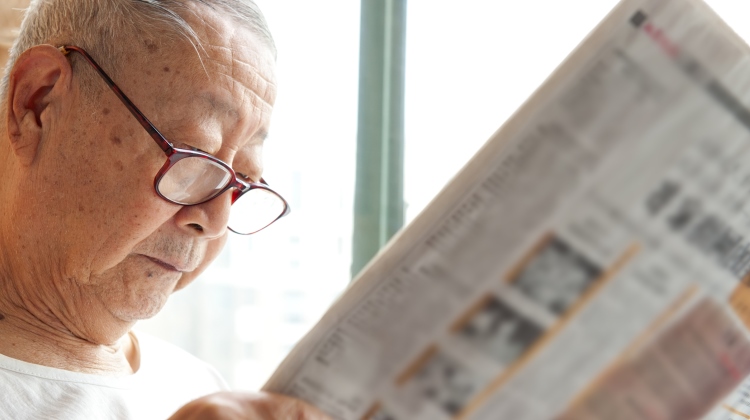If you're over 40 and having to increase the font size of this text, or find yourself holding the papers at arm's length, you could have presbyopia - or what's commonly called 'old eyes' or 'lao hua'. The condition is a natural part of ageing. It is different from longsightedness - which is caused when the eyeball is too short, so light entering the eyes falls beyond the image-sensing retina, causing blurry near vision. Presbyopia, happens when the natural lens in the eye loses its elasticity - and hence its ability to change shape to focus light accurately when looking at near objects.
To understand how presbyopia works, it helps to understand how the eye functions.
Your eyes work like cameras:
- The cornea acts as a lens. It is a thick clear membrane in the front of the eye that allows light in.
- The iris, located behind the cornea, acts as a shutter. It is a pigmented membrane that has an adjustable circular opening (the pupil). This pupil expands and contracts to control the amount of light entering the eye.
- The lens, located behind the pupil, is a transparent crystalline structure that is oval in shape. At each end, small iliary muscles pull to flatten the lens (to see objects that are far away) or contract to thicken, the lens (to see objects near at hand).
- The retina, located at the back of the eyeball is a light sensitive area of structures that pick up the messages coming in through the front of the eye and transmitting this information very quickly to the optic nerve and brain, translating these into the images we see.
- These combinations of functions allow light into the eye, focuses it on the vision.
Presbyopia happens when the lens of the eye becomes still and cannot change shape to focus on close-up images. This causes the light entering the eye to 'miss the target' (the retina). As a result, these images appear blurry.
Do I have presbyopia?
To confirm if you do have the condition, the most accurate way is to go for a basic eye exam at your optician or general practitioner. Signs of presbyopia include:
- Blurred vision when trying to read at a normal distance
- Needing to hold reading material further away so you can focus better on the text
- Eyestrain and/or headaches when doing close work or reading
The condition can feel especially bad when you are tired or in dim lighting.
How do I correct my presbyopia?
The simplest way to treat presbyopia is with glasses. There are several types to choose from depending on whether you have any existing vision problems.
- Reading glasses: If you have no other vision problems, prescription lenses are a good option for reading only.
- Bifocals or trifocals: If you are already myopic (unable to see objects at a distance), bifocal lenses are an option to correct both distance and near vision.
- Bifocal contact lenses: Like bifocal glasses, bifocal contact lenses can correct for distance and near vision.
Speak with your doctor or optician about the best solution for you.


